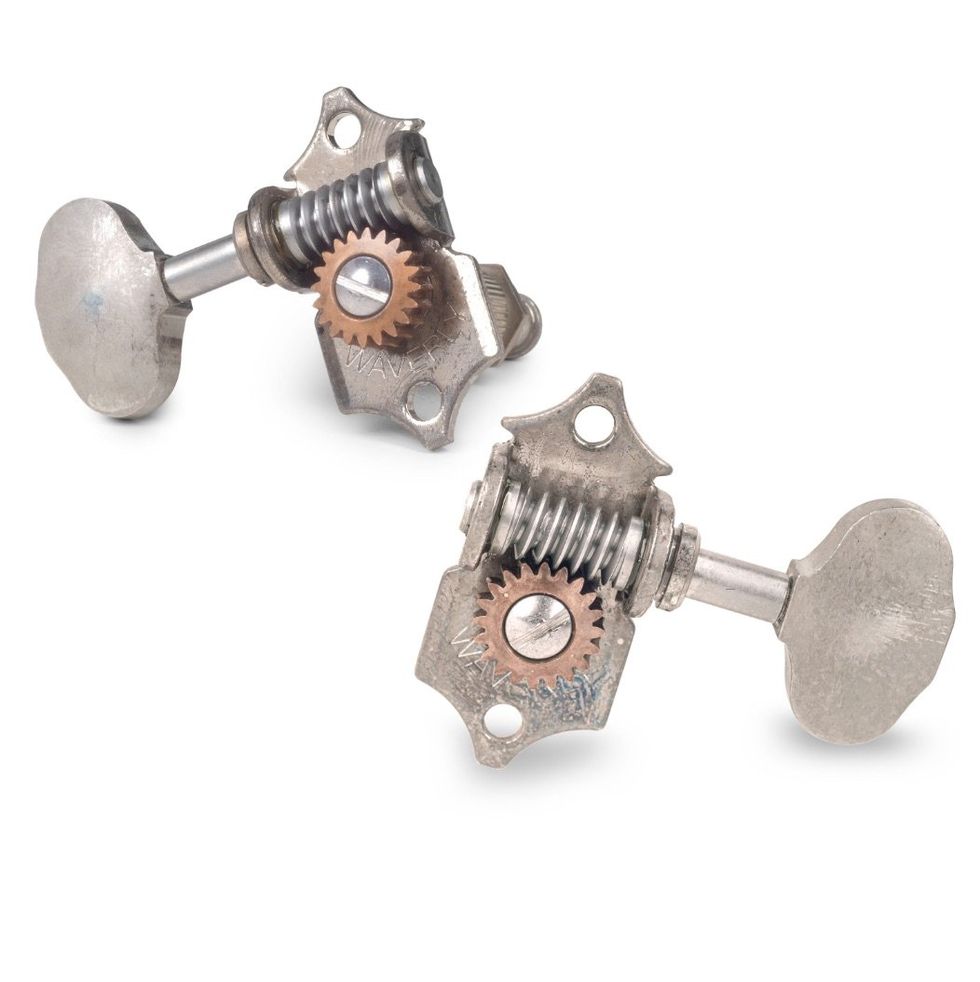
In my previous installment of Acoustic Soundboard, I explored the significance of tuners, their replacement options, and the importance of preserving the authenticity of vintage guitars. I also delved into acceptable choices for both new and vintage guitars, as well as the considerations for custom boutique instruments. This time, let’s dig a bit deeper on boutique tuners and how to properly outfit a custom guitar.
When commissioning a custom boutique guitar, it’s crucial to heed the guidance of your luthier. Understanding their preferred building style and the desired tonal characteristics they aim to achieve is paramount. As a responsible builder, my focus lies not in reinventing the wheel, but rather on tone, responsiveness, and providing warranties. For my personal line of guitars, I opt for Waverly tuners due to their lightweight properties and vintage aesthetic. With their small footprint, these tuners align perfectly with the tonal objectives I strive for.
Modern tuners have evolved from the original sealed Grover tuners that entered the market in the mid 1960s. Compared to the bulky and weighty original Grovers, the newer versions are significantly smaller, a design that many players find more desirable. Over the years, I have extensively used two reputable brands: Schaller and Gotoh. Their outstanding quality, desirable weight, and sealed construction make them favorites amongst many manufacturers and musicians. The precise, squared styling of Schaller tuners and the organic, rounded design of Gotoh tuners offer distinct options.
But luxury bespoke tuners have also gained popularity within the custom guitar and boutique instrument communities. These tuners boast unique styles, with each manufacturer offering their own aesthetic. Offerings from Rodgers Tuning Machines, for example, have garnered attention among my contemporaries for their quality construction, distinct styling, and custom engravings. However, these high-end tuners can get quite expensive, with some sets exceeding a thousand dollars. While undeniably excellent in their performance and craftsmanship, one has to weigh the price against the benefits—most other lower-priced tuners can undoubtedly get the job done.
“While undeniably excellent in their performance and craftsmanship, one has to weigh the price against the benefits—most other lower-priced tuners can undoubtedly get the job done.”
In the realm of aftermarket replacement tuners, our industry has made notable strides in providing alternative options. Grover offers a solid choice with the reintroduction of their Sta-Tite tuners, while numerous manufacturers now produce replicas of these sought-after machines, underscoring their timeless design. Plus, guitar supply houses offer a wide range of replacements that accurately mimic the tuners found on vintage instruments throughout the years. Many of these replacements also boast upgraded gear ratios (the ratio of the number of teeth in the gear to the number of teeth in the pinion, the pinion being the smaller of the two gears in mesh), transitioning from traditional vintage ratios to a more favorable 18:1 ratio—a preference shared by many players, including myself. The higher gear ratio proves particularly advantageous for musicians that employ a spread of alternative tunings during performances.
When it comes to repairing tuners, finding suitable options can be quite limited. Often, one finds themselves scouring through boxes of tuner parts in order to find the precise cog, screw, or post necessary for the repair. It can be a challenge to convey to customers that even seemingly small components can be quite costly, given the time and effort required to locate them. On the other hand, tuner buttons present a different story altogether. Suppliers have successfully replicated tuner buttons, catering to the needs of those seeking replacements for damaged or deteriorated buttons resulting from impacts or aging. Thankfully, in today’s market, many proficient guitar repair technicians are fully capable of undertaking such tasks.
Attention and effort is warranted when it comes to the maintenance of tuners. It is commonplace for guitar techs to tighten the threaded grommets on closed-back tuners as each season brings changes in temperature and humidity. Open-back tuners necessitate regular scrutiny of the screws securing the cog to prevent tuning issues or potential hardware loss. Mysterious vibrations and rattles experienced while playing specific notes can often be attributed to loose tuner parts, an issue that’s often easily remedied by a simple tightening. So if you want to avoid these annoying hindrances, you should add seasonal tuner maintenance to your comprehensive guitar care routine.
From Your Site Articles
Related Articles Around the Web









